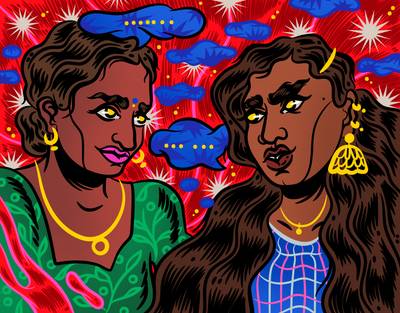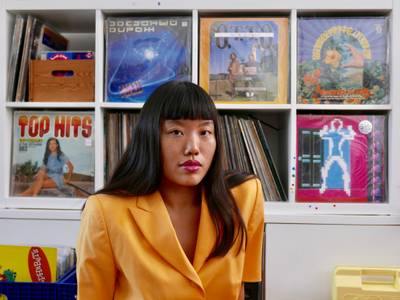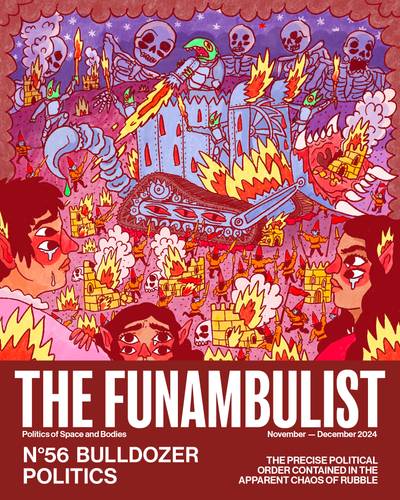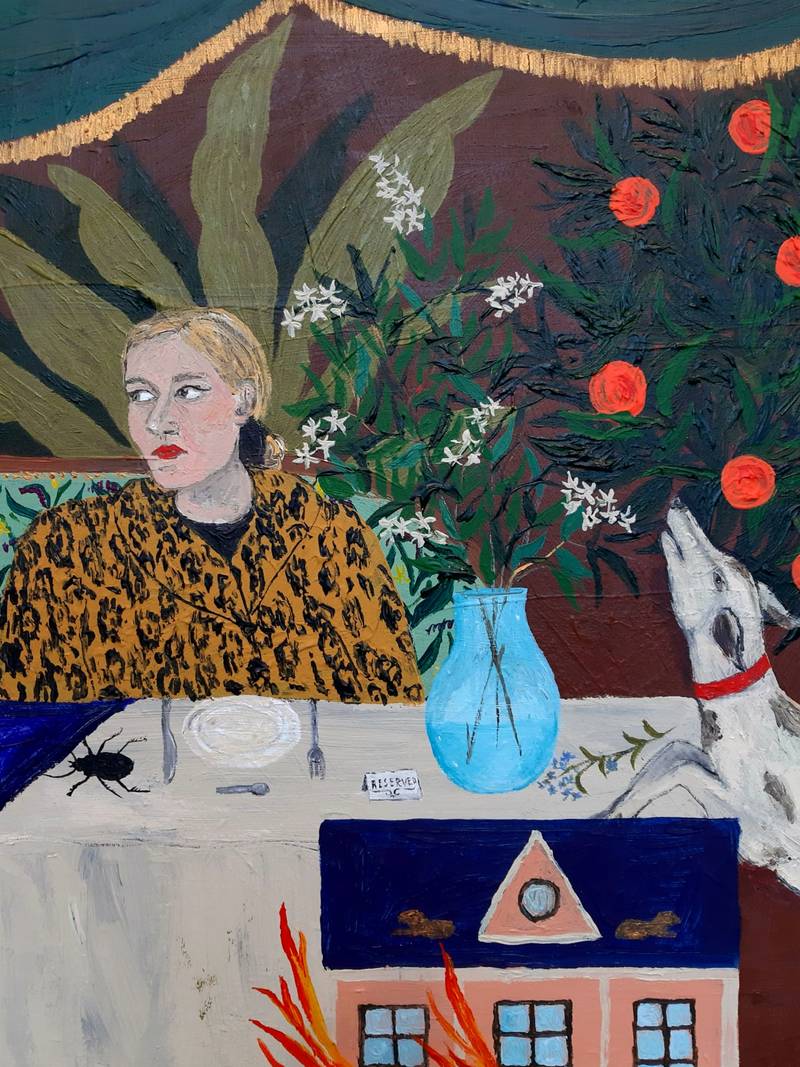

Self portrait by Melina Paakkonen, from Kohtauksia (Scenes), 2021
Riikka Stewen is an art historian, writer and occasional critic living in Helsinki. In her art historical research, she is fascinated by histoire à longue durée, by the power of stories and images to persist through time. She is also studying the history of an alternative tradition of materialist-spiritualist aesthetic thought based on the idea of universal creaturely solidarity.
Turku Art Museum is a charming small museum where I love to visit some of my favourite paintings, among them there’s the beautifully confident self-portrait of Elin Danielson or the melancholic Potato Girl by Hugo Simberg, but also Cows in a Birch Forest, from 1886, by Victor Westerholm, with its implacable lead cow still sternly facing the viewer.
This time, I came especially to see the monumental mural-like triptych by Melina Paakkonen in the studio space of the museum. It’s titled Kohtauksia (Scenes), and the three panels of the triptych depict each a different scene. On the left-hand side, theatrical curtains have been opened to reveal a scene where the figure of a woman clad in a black dress and a sand coloured hat raises her hand to send a carrier pigeon on their mission. She is surrounded by a reclining dancer in white, a sleeping dog, and behind her, there’s a jaguar guarding the entrance to a pavilion. In the central panel, two figures sit behind a large table: the woman we already encountered, looking at the personification of death next to her. In the right-hand panel, the woman sits on the floor in an interior where unexpected things happen.
When I meet the artist later in a café in Helsinki, I tell her that I noticed how the museum guard paused on their rounds to look at the details of her triptych and that I felt a bit jealous that they had the chance to continue taking in its many plots and subplots. She agrees that the painting contains many layers and levels.
MELINA: I don’t expect the viewer to take in everything in the painting at one glance. There are many possible storylines, and you can also read the painting in different directions. It’s not necessary to proceed in a linear fashion—you can go back at any time. When I began, I thought about how I wanted to show ordinary events and situations as if they were on stage, giving them importance. When I was offered the chance to show work in this particular space at the museum, I wanted to make the most of it as it’s not often possible to show work of that scale in a gallery.
RIIKKA: It is a monumental painting! When I looked at it, I wondered how your process begins, as the work seems both very architectural and intricately detailed at the same time. Do you begin by drawing sketches? Do you have the composition ready in your mind when you start to work?
I sketch directly on the support, but it’s a continuous process; I build stories and situations, but I may also change them as I think of them. Sometimes, as the painting progresses, I see connections that I haven’t noticed before, and new ideas come to my mind—the process nourishes itself. So there’s not necessarily a linear development of the narrative, nor is the composition fixed. I keep changing things. I paint with acrylic; it suits the spontaneity of my working style.
Sometimes, as the painting progresses, I see connections that I haven’t noticed before, and new ideas come to my mind—the process nourishes itself. So there’s not necessarily a linear development of the narrative, nor is the composition fixed. I keep changing things.
If you decide that something is not right, do you paint it over? Are there pentimenti in your paintings?
Yes, lots of them! Sometimes there are completely different things underneath what is visible. But here I started with the architectural setting – everything else unfolds with the process.
Do you think of it as actual architecture, with the different figures inhabiting its space? As a kind of architectural model or a doll’s house?
For me, it’s a 3-D world where I can make things happen and reflect on situations in the real world. For example, these three figures are self-portraits; they show different aspects of myself, my roles, or how I might react to different situations. Painting allows me to organize my thoughts and clear my mind. I feel that there are too many things encroaching on our minds. Painting is a way of meditating, practicing a kind of zen, and emptying one’s mind.
Is it perhaps also an escape from worrying, from thinking about the different catastrophic events that might take place? There are many potential dangers in the scenes, too—I notice that one of the decorative flags that the monkey is handling is about to catch fire in the right-hand panel. In the central panel, there is a house burning. But perhaps it’s only burning in the mind of the woman sitting at the table?
Yes, sometimes it’s difficult not to think of catastrophic things waiting to happen. The monkey represents a kind of disruptive agent. Animal figures are more spontaneous and expressive than humans, but I paint them to show human emotions. Perhaps it’s also a way of accepting the contingency of things, that not everything can be controlled, no matter how much you obsess.
Your work also continues the Surrealist women’s tradition and the deep connections that their work shows between human and non-human animals; they too painted worlds coinhabited by animals and humans.
Continuity is indeed important to me. I like to think that my work forms part of an art-historical continuum.
Are there any special artists you think of as your inspiration? What kind of artistic conversations do you feel your work is part of?
I don’t think I can specify or talk about individual artists. I’m quite omnivorous when it comes to art and art history.
To me, it seems that your work is also connected to the medieval style of visual narratives; you too depict characters in various situations at different moments of the story. Perhaps the difference is that, whereas medieval viewers would have known the biblical story beforehand, your story remains partly unknown to the viewer.
Some symbols are very well known in my paintings, whereas others may have a more personal dimension. When I work, I feel that my imagination is free – I let my mind work and find new associations and connections between things. Painting is a way of contemplating these interconnections. For example, Aurinkoisia huolia (Sunny Concerns) is a small painting which shows the sun weeping over its paradoxical role: there would be no life on earth without it, yet the sun cannot but aggravate the climate crisis. Its warmth both creates and destroys.
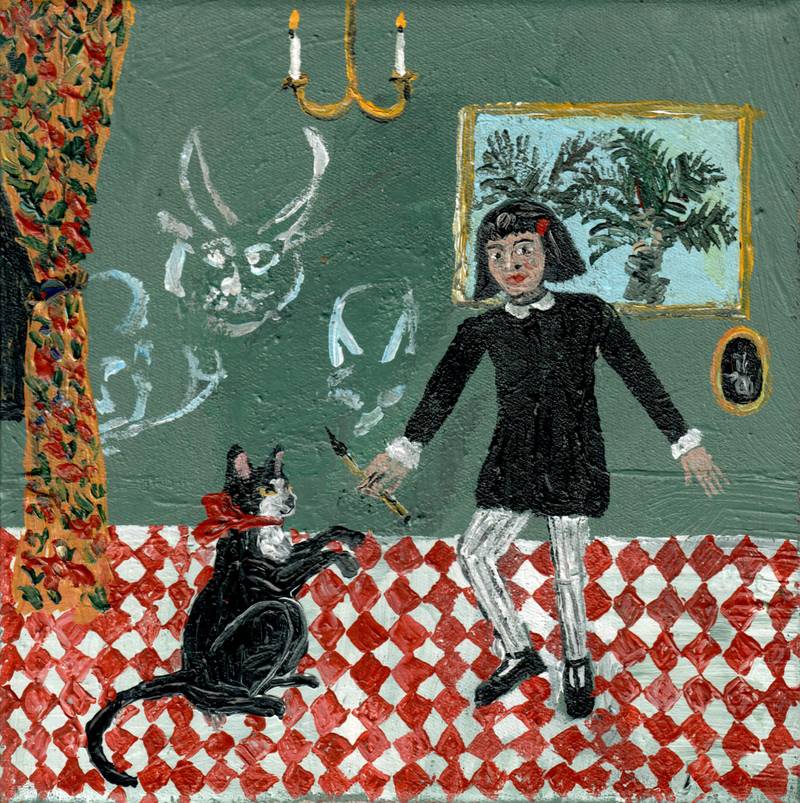

Piruja Seinille, 2021
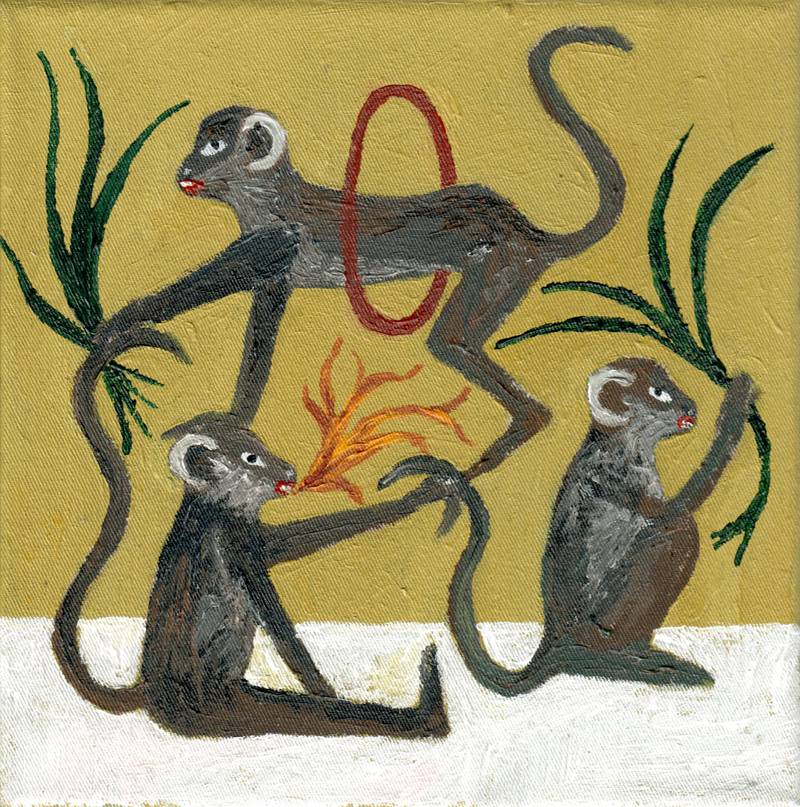

Apinat, 2022
***It reminds me of Renaissance emblems, too, where words and visual signs were combined to contemplate philosophical questions. I like to think and research. When I look at everyday objects and events, I see how they are connected to more significant issues and questions. Sometimes I take simple objects that catch my eye at flea markets, for example, only to find that they open up vistas for almost endless reflection. ***
The image of the sun is a recurring motif in your work. I understand that it relates to our contemporary climate concerns, but I also see it decorating these antique vases in Scenes. Is the vase also a flea-market find? Is it an actual object you have in your studio? It’s a symbol for thinking about plants and their lives. I love plants and researching them.
In Scenes, I counted at least 20 different plants. There are forget-me-nots, white lilies, roses, palm trees, and even the paradisical tree of the knowledge of good and evil.
Yes, I’m fascinated by the symbolism of flowers.
You have included a small note on the symbolism of flowers in the painting, but I notice you didn’t give an explanation for this flower here at the center. In Finnish, it’s called the bleeding heart, or the broken heart, the lieutenant’s heart. Is it significant?
It could be part of the narrative, but perhaps it’s more important to recognize that the knowledge of its transience constantly accompanies life. In my paintings, the personification of death is playful, not ominous or frightening. It’s a tribute to the fact that the potentiality of death is what connects all living creatures. It’s got more to do with being alive. People often ask me about it, but to me, it’s clear that it gives value to life.
In my paintings, the personification of death is playful, not ominous or frightening. It’s a tribute to the fact that the potentiality of death is what connects all living creatures. It’s got more to do with being alive.
The personification of death is certainly very present in the triptych. There’s the danse macabre in the central predella, which was said to show that death was democratic in medieval times. And at the centre, the protagonist sits at the dinner table with death next to her. I’d guess that you are familiar with the Finnish artist Hugo Simberg and his fascination with the personification of death. Death is present in all the panels of Scenes, but there are many other stories embedded there. There’s almost no end to the possible storylines waiting to be discovered.
When the painting process takes a long time, it’s not possible to plan or foresee the whole narrative. I painted Scenes for seven months, so there were naturally many changes and new inventions. Apart from the broader narrative, there are also images embedded within images. I like to paint pictures within pictures.
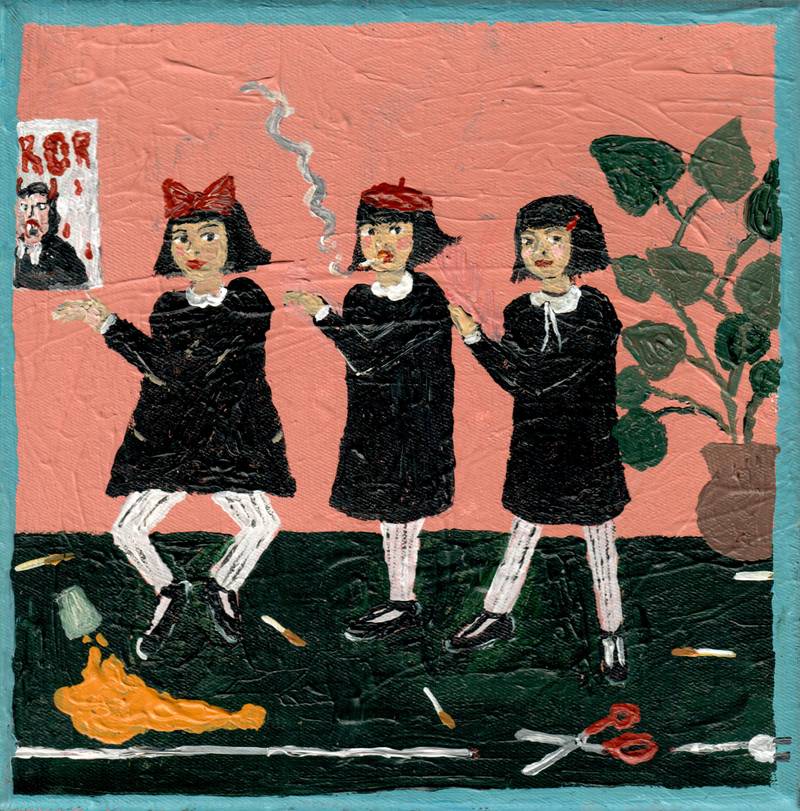

Not Good Girl Anymore, 2021
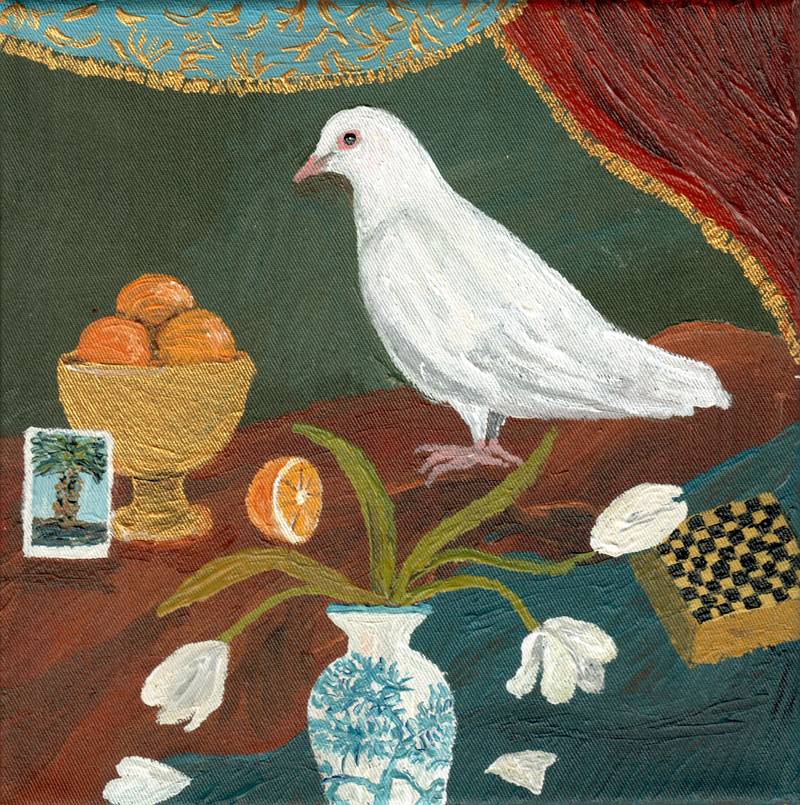

Kyyhky, 2021
I observed imaginary paintings, postcards, and other kinds of artwork and objets d’art within your paintings. It must be fun to imagine them! But it’s also interesting that nesting images give the viewer the feeling that the whole story has not yet been told, that there is still more to it—that you could add levels and levels of different realities. It is like falling into the rabbit’s hole like Alice in Through the Looking Glass and suddenly finding oneself in an alternative reality. But I’m also thinking of the Quattrocento, or early Renaissance, paintings when artists had just rediscovered that they could paint narratives and incorporate naturalistic-looking details in their paintings to convey symbolical meanings.
I enjoy looking at Renaissance paintings and the plants and animals depicted. In many paintings of the Virgin and Child, you can also see small birds, like the goldfinch, for example, which I’ve also often painted. I like to take small things and everyday events and elevate them.
Those kinds of Renaissance paintings were made either to keep close to you or for spaces and interiors where people would gather and spend a lot of time. They were not paintings you could consume quickly or walk past in a gallery or a museum. I think your paintings have the same quality: they too could be lived with. They, too, invite viewers to consider the significance of small things and to feel empathy for them.
But I still have a question regarding how you work. Virginia Woolf famously said that a woman writer must have a room of her own to work. What is your own space like? How do you create the environment where you are best able to work? How do you set up your studio? You already mentioned that you have books everywhere.
My studio is very cluttered, mostly with plants and paintings! I feel that I work best, that I can let my imagination work freely when I’ve had time to paint a lot. Sometimes I cover the studio walls with paintings. The studio becomes my world where it’s safe to imagine and think up stories and situations and organize my thoughts to make sense of our world.
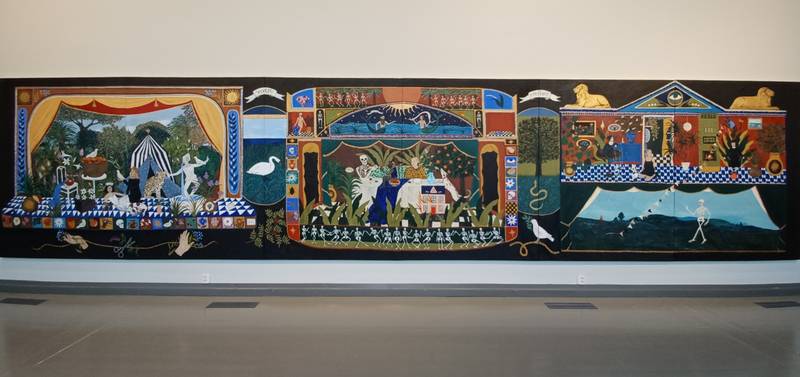

Melina Paakkonen, Kohtauksia (Scenes), 2021
